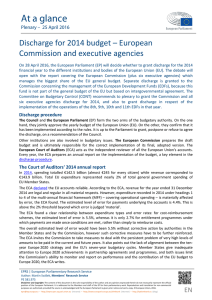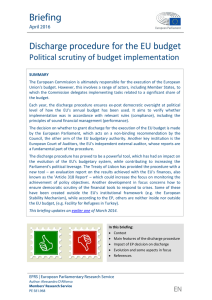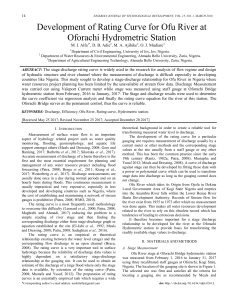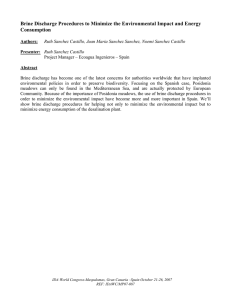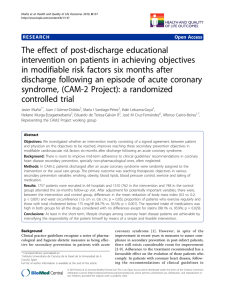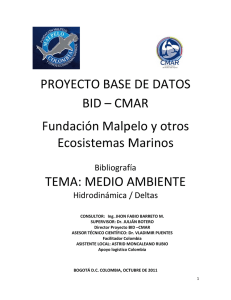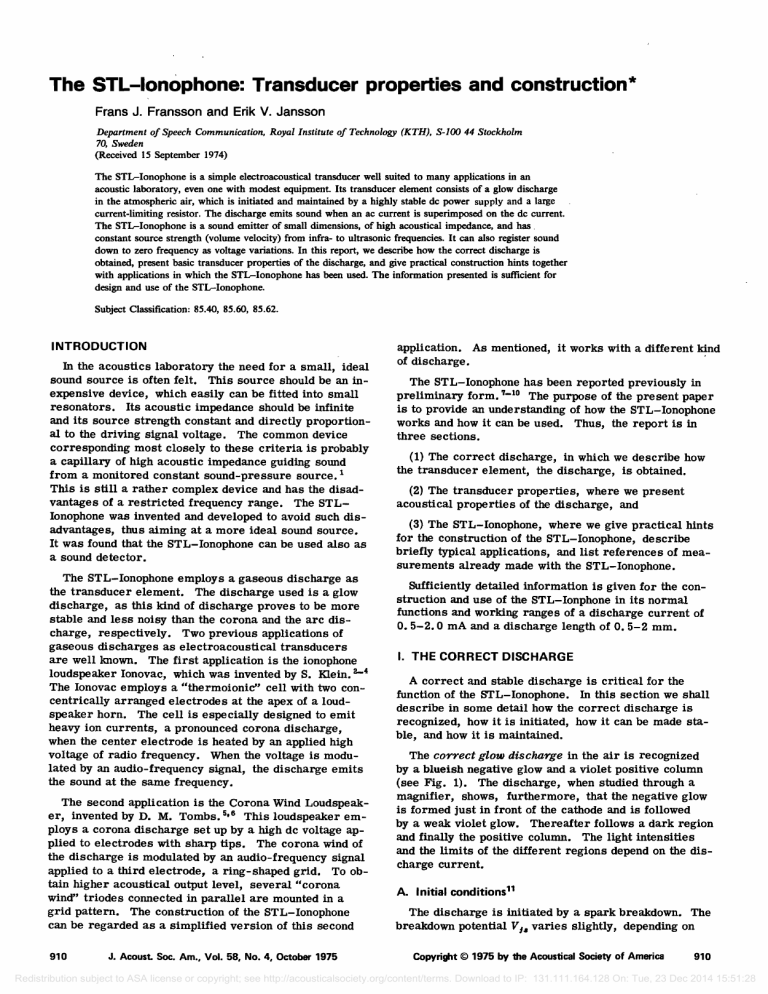
The STL-Ion0phone:Transducerpropertiesand construction*
Frans J. Fransson
and Erik V. Jansson
Departmentof SpeechCommunication,Royal Instituteof Technology(KTH), S-100 44 Stockholm
70, Sweden
(Received 15 September 1974)
The STL-Ionophone is a simpleelectroacoustical
transducerwell suitedto many applicationsin an
acousticlaboratory, even one with modest equipment. Its transducerelement consistsof a glow discharge
in the atmosphericair, which is initiated and maintainedby a highly stabledc power supply and a large
current-limitingresistor.The dischargeemits soundwhen an ac current is superimposed
on the dc current.
The STL-Ionophone is a soundemitter of small dimensions,of high acousticalimpedance,and has
constantsourcestrength(volume velocity) from infra- to ultrasonicfrequencies.It can also registersound
down to zero frequencyas voltagevariations.In this report, we describehow the correct dischargeis
obtained,presentbasictransducerpropertiesof the discharge,and give practical constructionhints together
with applicationsin which the STL-Ionophone has beenused.The informationpresentedis sufficientfor
designand use of the STL-Ionophone.
SubjectClassification:85.40, 85.60, 85.62.
INTRODUCTION
application. As mentioned, it works with a different kind
of discharge.
ß
In the acoustics laboratory the need for a small, ideal
sound source
is often felt.
This
source
should be an in-
expensive device, which easily can be fitted into small
resonators. Its acoustic impedance should be infinite
and its source strength constant and directly proportional to the driving signal voltage. The common device
corresponding most closely to these criteria is probably
a capillary of high acoustic impedance guiding sound
from a monitoredconstantsound-pressuresource.
This is still a rather complex device and has the disadvantages of a restricted frequency range. The STLIonophone was invented and developed to avoid such disadvantages, thus aiming at a more ideal sound source.
It was found that the ST L-Ionophone can be used also as
a sound
detector.
The STL-Ionophone employs a gaseous discharge as
the transducer element. The discharge used is a glow
discharge, as this kind of discharge proves to be more
stable and less noisy than the corona and the arc discharge, respectively. Two previous applications of
gaseous discharges as electroacoustical
transducers
are well known. The first application is the ionophone
loudspeakerIonovac, whichwas inventedby S. Klein.
The Ionovac employs a "thermoionic" cell with two concentrically arranged electrodes at the apex of a loudspeaker horn. The cell is especially designed to emit
heavy ion currents, a pronounced corona discharge,
when the center electrode is heated by an applied high
voltage of radio frequency. When the voltage is modulated by an audio-frequency signal, the discharge emits
the sound at the same frequency.
The second application is the Corona Wind Loudspeak-
er, inventedby D. M. Tombs.5,6 This loudspeakeremploys a corona discharge set up by a high dc voltage applied to electrodes with sharp tips. The corona wind of
the discharge is modulated by an audio-frequency signal
applied to a third electrode, a ring-shaped grid. To obtain higher acoustical output level, several "corona
wind" triodes connected in parallel are mounted in a
grid pattern. The construction of the STL-Ionophone
can be regarded as a simplified version of this second
910
J. Acoust.Soc. Am., Vol. 58, No. 4, October 1975
The STL-Ionophone has been reported previously in
preliminaryform.v-10The purposeof thepresentpaper
is to provide an understandingof how the STL-Ionophone
works and how it can be used. Thus, the report is in
three
sections.
(1) The correct discharge, in which we describe how
the transducer element, the discharge, is obtained.
(2) The transducer properties, where we present
acoustical properties of the discharge, and
(3) The STL-Ionophone, where we give practical hints
for the construction of the STL-Ionophone, describe
briefly typical applications, and list references of measurements already made with the STL-Ionophone.
Sufficiently detailed information is given for the construction and use of the STL-Ionphone in its normal
functions and working ranges of a discharge current of
0.5-2.0 mA and a discharge length of 0.5-2 mm.
I. THE CORRECT
DISCHARGE
A correct and stable discharge is critical for the
function of the STL-Ionophone. In this section we shall
describe in some detail how the correct discharge is
recognized, how it is initiated,
ble, and how it is maintained.
how it can be made sta-
The co•'ect glow discha•'ge in the air is recognized
by a blueish negative glow and a violet positive column
(see Fig. 1). The discharge, when studied through a
magnifier, shows, furthermore, that the negative glow
is formed just in front of the cathode and is followed
by a weak violet glow. Thereafter follows a dark region
and finally the positive column. The light intensities
and the limits of the different regions depend on the discharge current.
A. Initial conditions11
The discharge is initiated by a spark breakdown. The
breakdownpotential V•, varies slightly, dependingon
Copyright(D 1975 by the AcousticalSocietyof America
910
Redistribution subject to ASA license or copyright; see http://acousticalsociety.org/content/terms. Download to IP: 131.111.164.128 On: Tue, 23 Dec 2014 15:51:28
911
Franssonand Jansson:The STL-Ionophone
911
FIG. 1. Typical correct
STL-Ionophone discharge: ,
A, anode electrode; PS and
PW, violet-colored positive
A
column, PS, being more
intense; W, a weak violet
glow and N an intense
blueish negative glow; C,
cathode
product V•. I s which increases approximately with the
square root of I• and is of the magnitudeof 1 W, cf. Eq.
2.
The discharge produces nitrous gases in small
amounts which increase with I s squared. Furthermore,
the discharge can emit small charged particles.
The
influence of these factors may have to be suppressed in
specific applications.
electrode.
C. Designconsiderations
The construction
contentand humidity of the gas, the air, but Vs• depends
mainly on the electrode shapes and the electrode gap.
Lowest Vs, is obtainedwith a plane cathodeand an anode
with a sharp tip in agreement with earlier
measure-
i.e.,
(1)
¾s=increases approximately in a linear fashion as
functionof the electrodegaplengthd. •s
B. Stationaryconditions
14
The two main independent parameters of the discharge
are the electrode gap length and the electrical current
I s. The volt-ampere characteristics of the discharge
I: 400.
(2)
features of the characteristics are that Vs increases with
d but decreaseswith increasingI s. Normally occurring
changes in the air as well as different electrode shapes
and materials do not significantly alter the volt-ampere
characteristics.
The electri. cal noise signal is strongly dependent on
the discharge stability. It has a broad-band amplitude
of 0.1-1 V for a stable discharge, and is of flicker
type, i.e., with different frequency components rapidly
decreasing with increasing frequency. The level of
the noise signal varies with the gas. Experiments with
different gases indicate that the discharge temperature
limit
for the noise
level.
Once
a stable
discharge is obtained, the electrodes seem to have little
influence
on the noise
the' fol-
level.
The stability of the discharge depends on the electrode
shapes. The positive column starts from the tip of the
anode. This means that a sharp and well-defined anode
is preferable but, except from this tip angle and tip
radius, seems to be of little importance. The negative
glow is formed close to the tip of the cathode, but preferably at a small hollowness close to the tip. A highly
polished cathode makes the negative glow move around
outside the electrode surface, thus giving an unstable
discharge. The electrode material seems only to be of
second-order importance. A Cu cathode doped with Hg
tends to give a better discharge stability than before
doping.
The heat dissipation of the discharge is given by the
0.
=.
(3)
Furthermore, the circuit should fulfill (a) the initial
condition
V0-• Vs•,
where Vs is the voltage over the discharge. The main
sets the lower
take
Experiments indicate that the minimum noise level is
set by the gas when the electrodes are designed to give
a correct and stable discharge, with a point anode and a
blunt cathode. The electrode gap length and the current
define the required voltage supply circuit. From Eq. 2
the lower limit for the current limiting resistor R• of the
supply circuit can be estimated. This resistor must be
larger than the magnitude of the negative differential
resistance of the discharge, i.e., the slope of the voltampere characteristicS, so that
follows approximately the relation
350+400. d/(Is+ O.13. 10's) ,
must
tion of nitrous gases.
ments.•2 For a pointanodeanda bluntcathode,
¾s•= (1' 6+ 800' d). 10s ,
of the transducer
lowing into consideration. To be acoustically useful the
discharge must be highly stable with a low noise level.
In addition, it is advantageous, with moderate circuit
voltages, to have low heat dissipation and small produc-
(4a)
with Vs•givenby Eq. 1 and (b) the stationarycondition
V0= Vs+R•. I s ,
(4b)
with Vs given by Eq. 2. If Eq. 4a sets the allowed lower
limit for V0, then R• must be sufficiently large to satisfy
Eq. 4b for the required Is, but if Eq. 4b sets the limit,
then both conditions
are
satisfied.
Calculated
minimum
V0 and minimum R• are plotted versus I• in Figs. 2 and
3, respectively. The maxima of the two curves in Fig.
3 give two working points for the same V 0 and R•. This
ambiguity is removed by a slight increase of V 0 and R•,
which also secures satisfactory
operation without read-
justments in lengthy experiments.
obtain the correct
For a first trial to
and stable discharge,
it is suggested
that an R• of 3 M• is used with V 0 slowly increasing to
Vs•, and adjustedto a higher value if a larger I s is required.
II.
THE TRANSDUCER
PROPERTIES
The data presented in this section give the acoustical
properties of the discharge with a simple two-electrode
arrangement. This arrangement works satisfactorily
in the sound-source case and makes it possible to measure accurately the source properties of the discharge.
The arrangement does not, however, provide a discharge sufficiently stable for an accurate measurement
of the microphone properties of the discharge, and
therefore only typical results are presented.
The discharge has two excellent acoustical properties.
First, the transducer is a very small device, its largest
J. Acoust. Soc. Am., Vol. 58, No. 4, October 1975
Redistribution subject to ASA license or copyright; see http://acousticalsociety.org/content/terms. Download to IP: 131.111.164.128 On: Tue, 23 Dec 2014 15:51:28
912
Fran•onandJanson:TheSTL-Ionophone
i
!
•,._•
•
!
/
\
= 2• 'x. • 'x
'•
•o
xx
0
1
• •
•
x•.
0
_•
2mm
I-\••••-\
912
2
IjmA
FIG.2. Minimum
supply
voltage
V0mia
(fulllines)asfunction
ofdischarge
current
Ij andelectrode
gapdi and2 mm.The
straight
aregiven
bythe
breakdown
voltage
, the
starting lines
condition,
and the
curved
by voltage
over Vjs
minimum
•
Time ß
FIG.
4.Pulse
of
1-mse
duration transmitted by the
discharge into a cylindrical
tube-upper
curve
superimpose
discharge
current,
lower
curve
recorded
sound-pressure
response.
tubes, in the frequency range of 110 to 4 kHz, have
provedthe sourcestrength
to be constant
within
:1:
!dB.
Free-fieldmeasurements
from2 to 20kHzproved
the
source
tobenondirectional
witha constant
source
strength
within
ñ0.5dBindependent
offrequency
'
The frequencyrangeis not limitedto audiofrequen-
current-limiting
resistance
Rl and
the
discharge
voltage
Vi, cies
ß Considerable
output
has
been
registered
upto
150 kHz.
the stationary condition.
radial distance multiplied by the wavelengthconstant
being less than 0.5 for audio frequencies(< 20 kHz). It
can be regarded therefore as a point transducer in most
practical applications and causes negligible disturbance
whenplacedin an acousticalfield. Secondly,no resonancesexist in the glow discharge in the audio-frequency
range: the frequency response of the transducer contains no peaks and dips.
The sourcestrengthq• is foundto obeythe empirical
relation
q•=k. v•. i• ,
wherek is a constant0.3. 10'ø. Equations2 and5 also
showthatqj is approximatelyproportionalto the elec-
trodegapd andthemodulation
degreei•/I•, butinversely proportional
to thedc currentI•. Thisis in good
agreement
It shouldbe pointedoutthatthe dischargeis sensitive
to externalelectrical fields andit is possibleto modulate or demodulate
witha third electrode(cf. Refs. 5
and6). Thedischarge
is insensitive
to magnetic
fields.
A. The glow dischargeassoundemitter
Measurementsverify that the discharge works as a
(5)
With direct
measurements.
The pulse response gives an informative and easily
interpreted picture of the reproduction quality of a
transducer. An ability to reproduce sharp corners of a
rectangular pulse reflects a goodhigh-frequency response, and an ability to reproduce the overall shape
of a low-phasedistortion. An example of the discharge
as a pulse emitter is shown in Fig. 4. The emitted
simple soundsourcewhenIj andthe ac-signalcurrent
ij are kept constant,i.e., it worksas a small pulsating
spherewith constantsourcestrength(volumevelocity)
whenthe dischargeis suppliedwith power from constant
pulse has indeedsharp corners and a shapeclosely re-
current generators. Experiments with cylindrical
is well suitedfor reproductionand radiation of complex
/•./•1
i i ! ,
/..
sembling those of the excitation pulse. The small
amount of shapedistortion is due partly from the disper-
sionof the transmissionmedium. Thus, the discharge
sounds.
The acoustical impedance of the discharge sound
source is very high. A comparison of resonance frequencies and bandwidths of tubes measured (a) with a
sound source connected to a capillary (i.d. 0.06 cm
and length 5 cm), and (b) with a discharge transducer
revealed no significant differences.
The acousticnoisesignal of the correct dischargeis
small, is not audible, and is difficult to measure.
0
•
o
It
I • •'-'•'•:•:•:•
can, however, be estimated from Eq. 5, combinedwith
1
themeasured
electricalnoisesignal,whichgivesa qt
ij mA
FIG. 3. Mi•mum c•rent-limiting resistanceR•n (f•l lines)
as functionof dischargec•rent Ii andelectrodegapd I and
2 mm. The do•ed brokenline with continuedf•l line is set by
mi•mum c•rent-limiting resis•nce for a stabledischarge,
the brokenl•e wi• cont•ued •11 l•e is set by the required vol•ge pic•p betweendisc•rge vol•ge •d bre•down vol•ge.
correspondingto an ij of approximately0.001 mA broadband.
The harmonicdistortionis foundto dependlargely on
the modulation
degree(i•/I•). For a modulation
degree
of 10%, the secondharmonic is measured to be about 30
dB below the fundamental and the third harmonic about
45 dB. Whenmodulationis increasedto 50%, the sec-
J. Acoust Soc.Am., Vol. 58, No. 4, October1975
Redistribution subject to ASA license or copyright; see http://acousticalsociety.org/content/terms. Download to IP: 131.111.164.128 On: Tue, 23 Dec 2014 15:51:28
913
913
Franssonand Jansson:The STL-Ionophone
T
M
C
A
T
M
FIG. 5. Arrangement for measurement of microphone properties: Sound transmitter T in one end and pressure microphone
M in the opposite end of a closed metal tube of square cross
section. Halfway between the ends and in the center of the
cross section the discharge is set up between two sets of differ-
plane of the sound wavefront and the curvature in a plane
perpendicular to the wavefront. A larger curvature
gives larger voltage variations.
If the curvature is
changed from convex to concave in the same plane, then
the phase of the voltage variations changes by 180ø. In
a position in between, a straight discharge, the frequency of the voltage variations is twice that of the acoustical signal. These results suggest that the voltage variations are due to length variations of the discharge by
small changes in curvature around equilibrium.
The
straight discharge is lengthened on both sides of equilibrium and should give a full-wave rectification and a
frequency doubling, which is in agreement with the experimental results.
In the second effect, the (straight) discharge has
ently arranged electrodes (A and C). The electrodes are
mounted to allow revolutions of 360 øeither way, and their
mountings give air tight fit, flush to the inner wall of the tube.
maximum sensitivity in a direction perpendicular to the
sound-wave fronts. The voltage variations have the
same frequency as the sound. If the polarity of the electrodes is changed, then the phase of the voltage variations is changed 180ø. These results suggest that the
effect is due to the superposition of the acoustical field
ond harmonic
on the electrical.
increased
to about - 20 dB and the third
to -35 dB. The true distortion of the discharge is
slightly lower than these figures, as some of the distortion originates in the modulator.
The physical process behind the soundgeneration is
not fully understood. Equation 5 states that the source
strength is proportional to the ac power supplied, to the
discharge, but assuming an adiabatic process in an ideal
gas of constantvolume, a source strength decreasing
with the frequency squared is to be expected, thus contradicting the measured properties. A close study of the
discharge when modulatedby a low-frequency signal,
shows that the light intensity increases with current,
that the positive column of the discharge rocks, and that
the width of the positive column increases. The rocking
motion should give a dipole radiation characteristics,
but this is contradictory to the measured directional
characteristics of the discharge. It is therefore believed that the changes in width is the main process for
the sound generation.
The microphone properties were investigated by
means of the arrangement sketched in Fig. 5. The two
different electrode systems made it possible to revolve
the discharge in two perpendicular planes. The arrangement is operated at the resonance frequencies of the air
column, thus providing simple relations between (a) the
soundpressure at the microphoneand (b) the velocity
and sound pressure at the discharge.
each with two different
Although the horizontal part of the curve at low frequencies indicates a velocity dependence, later measurements indicate that an amplitude-limiting
effect causes
this flattening of the response.
The two mentioned directions of maximum sensitivity
exist also for the discharge as a velocity meter of a
dc air flow, but the velocity amplitude is in most of our
applications sufficiently large to change the discharge
curvature.
The relation between dc air velocity and dc
voltage change is linear with good accuracy over a con-
siderable range (see Fig. 7). It is possible to measure
sound depends, however, on the dc velocity of the air.
Preliminary experiments indicate that the glow discharge registers the air velocity. In further experiments it was found that the voltage variations over the
discharge register displacement rather than velocity and
that the sensing mechanism is rather complex.
effects
more than -6 riB/octave showsthat the discharge registers displacement rather than velocity in this range.
air velocity and soundsimultaneously. The sensitivity to
B. The glow dischargeas receiver
Two different
Typical constant-velocity frequency responses are
shown in Fig. 6. The points mark recorded dischargevoltage-variation maxima, which are to be found only for
the first, third, fifth, etc., resonances of the air column-which means that the discharge records a component of air motion and not pressure.
The slope of
III.
Prototypes of the STL-Ionophone consisted of a plexiglass insulator with two brass pins to which the electrodes were attached. A large resistor was soldered to
the anode pin to remove the influence of stray capacities
dB
-30 -
-o ........
-z,0
•.
rections of maximum sensitivity are found. In the first
effect the sensitivity depends on the discharge curvature.
Maximum sensitivity is obtained with the discharge in a
•
'
1.0
2.0
'
-50
-60
main di-
THE STL-IONOPHONE
'
0.2
'
0.5
k Hz
FIG. 6. Constant velocity frequency responses of a discharge:
circles, with the discharge in parallel with, and triangles,
with the discharge perpendicular to the sound wavefronts, 0 dB
: 4.1 ß103 V. sec/m.
J. Acoust. Soc. Am., Vol. 58, No. 4, October 1975
Redistribution subject to ASA license or copyright; see http://acousticalsociety.org/content/terms. Download to IP: 131.111.164.128 On: Tue, 23 Dec 2014 15:51:28
914
Franssonand Jansson:The STL-Ionophone
1.6
I
!
i
!
914
!
proved filtering. To the positive terminal a series of
1-Mi2 resistors are connected, which can be short-circuited in order to adjust the total current-limiting resisrance. A current modulator for the STL-Ionophone
is connected to the negative terminal. The modulator
consists of a simple voltage amplifier. The cathode of
the tube (ECC 83) is connected through a resistor to
give a suitable grid bias and the anode directly to the
cathode lead to the STL-Ionophone. The modulation ar-
1.4
1.2
ßrangemerhhas provedto work extremelyreliably.
I
I
0
i
0.2
i
i
0.4
i
In most applications involving small acoustical resonators, we use an electrode gap of 0.15 cm and a discharge current of 0.5 mA. For these values, Figs. 2
i
0.6
0.8
and 3 indicate a minimum supplyvoltage V0 of 3 kV and
velocity cm/sec
FIG. 7. Discharge voltage Vj as function of do air velocity
with the dischargeperpendicularto the velocity andI i = 0.6 mA.
on the discharge stability. Although the prototype STLIonophonesare still of use, a "standard" STL-Ionophone
has been developed. Its design is such that it can be
easily modified when required. The standard STL-Ionophone has mainly the same construction as the prototype
a current limiting resistance R z of 3.5 M 13. The ac re-
sisranceof the ionophone
is (R, +dVj/dIj), whichis here
approximately 2 M t2. This resistance indicates that a
modulation of 300 V is needed to obtain a 30% modula-
tion degree, which leads to a source strengthof 6. 10-8
m3/sec(approximately25 dB SPL at 1 kHz anda disrance of 10 cm in a free field) and a signal-to-noise ratio
of approximately 45 dB.
ple design to produce, which still meets the quality de-
The STL-Ionophone has been employed in many different measurements. Its advantage as a constant volume-velocity source of high impedance over a wide fre-
mands
quency range means that no correction
but different
materials
mentioned
have been used to achieve
in the introduction.
In our trials
a simwe
found that thin wires just cut off with an ordinary wire
cutter generally give a point with the required small
hollowness useful for both anode and cathode. Copper
wires can be soldered to the brass pins and are simple
to replace. As the cathode becomes very hot, the longterm performance is improved by using tungsten wires
jammed into position by folding over the tops of the
brass pins. The cathode occasionally requires cleaning
by a fine grinding paper to remove waste products which
collect on it. The plexiglass insulator tends to leak
surface currents after some time, presumably because
of ultraviolet radiation of the discharge. Therefore,
oxide-ceramic insulators should be used in preference.
Finally, in tests of different supply leads to the STLIonophone, it was found that an ordinary 300-• antenna
band cable gives the best performance, although a coaxial cable is preferable from a more general constructional
view.
The electrodes of the standard STL-Ionophone A and
C in Fig. 8 are cut of thin wires (diameter 0.01-0.02
cm) and are attached to the brass pins B (diameter 0.13
cm). The pins are rigidly fixed into the ceramic insulator I by means of heat-hardened epoxiglue and are
slightly bent in final adjustment of gap length and electrode alignment. A final current-limiting resistor R of
is needed in re-
cording responses by single-frequency sweeping. Furthermore, it can be used as a complex sound emitter,
radiating the same shape as the electrical input. Typically, the STL-Ionophone is inserted through a tightly
fitting hole in a wall of the test object, and the enclosed
air column is thereby excited by a specific signal and
the radiated soundis picked up by a microphone. In
such a way, we have measured outside the laboratory
the properties of a unique Swedish folk-music pipe with
a minimumof equipment.•s In the laboratorythe STLIonophone is usually employed to record transmission
functions with a swept single frequency when high ac-
curacy is needed.•,8,•a_•.•We have also used it to obtain
measures of source spectra by matching ordinarily excited output spectra with those with a well-defined ex-
citationby the STL-Ionophone.•'•' With the STL-Iono-
phonemounted
closeto a Br[{el& Kj•ermicrophone
sheltered by a short sound (see Fig. 9), we have measured input impedances of small, irregularly shaped
rooms.2s The samearrangementhasbeenusedelse-
whereby K. D•kanto measure
resonance
frequencies
of
brass windinstruments.•.4 Further possibleuse of a
constant-velocity sound source, such as the STL-Iono-
phone, are foundin a report by T. Salava.
With the STL-Ionophone receiver we record either the
500 k• (precision coal layer 1 W 1%) is soldered directly to the anode pin. A band cable 0.6 m long is soldered
to the resistor R and the cathode pin. The resistor,
the solder joints, etc., are covered by two layers at
heat-shrunk plastic tubings, U and E, to ensure easy
and safe handling, good electrical insulation, and mechanical ruggedness.
The supply circuit consists of an adjustable dc power
supply, 0-5 kV, with a large capacitor across the output terminals, thus providing an ac short circuit and ira-
FIG. 8. Standard STL-Ionophone design: A, anode; C, cathode;
B, brass pins; I, insulator; R, last current-limiting resistor
(500 k•):
inner insulation layer U and external E. Approxi-
mate geometrical dimensions--length
1.5
10 cm and maximum width
cm.
J. Acoust Soc. Am., Vol. 58, No. 4, October 1975
Redistribution subject to ASA license or copyright; see http://acousticalsociety.org/content/terms. Download to IP: 131.111.164.128 On: Tue, 23 Dec 2014 15:51:28
915
Fransson
and Jansson'The STL-Ionophone
915
SECTION A-A
PBx
W•'"
•
*The STL-Ionophone (STL standsfor the SpeechTransmission
A
Labor,atory) was invented in the early sixties by the late Frans
Fransson, who also conducted its early development and first
applications. In 1968 Erik Jansson joined the project to develop the STL-Ionophone as a technically useful tool. The
report contains mainly experience and information collected
up to the death of Dr. Fransson in 1972.
1E. V. JanssonandA. H. Benade, "On Plane andSpherical
Waves
A
in Horns
Measurements
FIG. 9. Sketch of impedance measuring head in holding fixture,
section andfront view. Holdingfixture: a bushingB glued to
the cavity wall W. Measuring head: a (plexiglass) plug P with
the STL-Ionophone S and its insulated supply lead with last current-limiting resistor I and microphone C (•!-in. Br[iel &
Kjmr) with capillary sondM. All joints are made air tight with
O-rings
with Non-Uniform
Flare.
II.
of Resonance Frequencies
Prediction
and
and Radiation
Losses," Acustica 31, 185-202 (1974).
2S. Klein, "Cellule thermioniquede grandpuissance• atmospheregazeuse(notamment• l'air libre) et ions positifs,"
tompt.
Rend. 222, 1282-1284
(1946).
3S. Klein, "Augmentation
du tendementde la cellule thermonique•grande puissancepar superpositiond'un champ intense obtenu par une tension •lev•e de haute fr•quence,"
Cornpt. Rend. 233, 143-145 (1951).
0.
.
4j. C. Axtell, "Ionic Loadspeakers,"Trans. [RE-PGA PGA-8,
voltage variations over the discharge by means of a re-
sistive voltage divider (100 M •/1 M •), or the current
variations in the circuit by a suitable large resistor in
the negative lead. In this function the STL-Ionophone
can record high-intensity levels, the lower limit being
set by the noise level of the STL-Ionophone. Because
of its complex receiving properties, calibration is necessary if absolute measures are needed. Furthermore,
care
should be taken
electrical
fields
to control
air
which can influence
streams
and external
measurements.
So far we have used the STL-Ionophones in one case
where the simultaneous dc air velocity and sound are of
great interest.
At the embouchure of a flute these two
parameters were recorded employing the type of STL-
Ionophone
drawnin Fig. 8. •.6 The absolutemagnitudeof
the ac components can be obtained automatically by an
amplifier, the amplification ofwhich is set by the dc voltage.
IV.
CONCLUDING
REMARKS
Two goals were set for the developmentof the STLIonophone. First it shouldbe a simple device to use and
secondly a highly reliable tool for accurate acoustical
measurements. As a soundsource these goals have in
large measurebeenachieved,but as a recordingtransducer it is still only a special-purpose device for labora-
tory use. The STL-Ionophonedescribedin this paper is
inexpensiveand simple to construct. The information
supplied and some practice is sufficient to obtain the
small, wide-bandsourceof highacousticalimpedance
and constant source strength.
ACKNOWLEDGMENTS
In ourworkwith the STL-Ionophonewe havebeengreatly
helpedby Dr. Roll B. Johanssonat the Department of Plas ma Physics, KTH, for our basicunderstandingof discharge
phenomenainvolved, whichis gratefully acknowledged.
This work was supported by the Swedish Council for
Applied Research and the Swedish Board for Technical
Development.
21-27 (July 1952).
5D. M. Tombs, "CoronaWindLoadspeaker,"Nature (London)
176, No. 4489, 923 (1955).
6G. Shirley, "The CoronaWind Loudspeaker," J. Audio Eng.
Soc. 5, 23-31
(1957).
?F. Fransson, "An Ionophonefor Acoustic Measurements,"
STL-QPSR No. 4, 22--26 (1962).
8F. Fransson, "The S. T. L. Ionophone,"Fifth Int. Congr.
Acoust. Liege paper J36, (1965).
9F. Franssonand E. Jansson,"The STL-IonophoneMicrophone," Seventh Int. Congr. Acoust.,
Budapest paper 19E5
(1971).
løF. FranssonandE. Jansson,"Prop•ertiesof the STL-Ionophone Transducer," STL-QPSR No. 2-3,
43--52 (1971).
llj. D. Cobinc, GaseousConducto•'s(Dover, NewYork, 1958),
Chap. 7, pp. 143-204.
12A.vonEngel, IonizedGases(Clarendon,Oxford, 1955), 1st
ed.,
pp. 174-177.
13Inthe following,measuresare givenin SI unitsff nototherwise
stated.
14Ref.11, Chap. 8, pp. 205-209.
15F. Fransson,"Die Beziehungen
zwischendenResonanzeigenschaften and den gespielten Grundfrequenzender 'Spil•pipa, '"
in Studia inst•'umento•'um musicae popularis, E. Stockmann,
Ed. (Musikhistoriska museet, Stockholm, I972), Vol. 2, pp.
.90-96.
l•F. Fransson, "Measurementson Flutes from Different
Periods, Part I," STL-QPSR No. 4, 12-16 (1963).
l?F. Fransson, "Measurementsof the Head-JointPerturbation
and the Embouchure-Reactance
4, 15--22 (1968).
of Flutes,"
STL-QPSR No.
18j. Sundberg,"Measurements
on OrganPipes," STL-QPSR
No. 1, 18-22
(1964).
19j. Sundberg,The Significance
of the Scalingin OpenFlue
O•'gan Pipes (Almqvist & Wiksell, Uppsaia, !966), with summary in English.
•'øF. Fransson, '•Vleasurementsof the SoundVelocity in Gas
Mixtures,"
STL-QPSR No. 1, 18-26 (1968).
•'lJ. Sundberg,"ArticulatoryInterpretationof the SingingFormant,'" J. Acoust. Soc. Am. 55, 838-844 (1974).
•'•'F. Fransson,"The SourceSpectrumof Double-ReedWoodWind Instruments, Part I," STL-QPSRNo.
Part II, STL-QPSR No; 1, 25-27 (1967).
4, 35-37 (1966);
•'SE.Jansson,"RecentStudiesof Wall and Air Resonancesin
the Violin,"
STL-QPSR No. 4, 34-39
(1972).
24K. D•kan, "The Ionophone
in MusicalInstrumentsResearch,"
Hudebni N•stroje 11, 49-53 (1974) (in Czech).
•'•T. Saiava, "Sourcesof the ConstantVolumeVelocity and
Note. STL-QPSR stands for the Speech Transmission Laboratory, Quarterly Progress and Status Report (Department of
Speech Communication, KTH, Stockholm) in the references.
Their Use for Acoustic Measurements,"
22, 146-153 (1974).
J. Audio Eng. Soc.
2•F. Fransson, "Experimentson Flutes," STL-QPSRNo. 4,
29-33
(1972).
J. Acoust Soc. Am., Vol. 58, No. 4, October 1975
Redistribution subject to ASA license or copyright; see http://acousticalsociety.org/content/terms. Download to IP: 131.111.164.128 On: Tue, 23 Dec 2014 15:51:28
